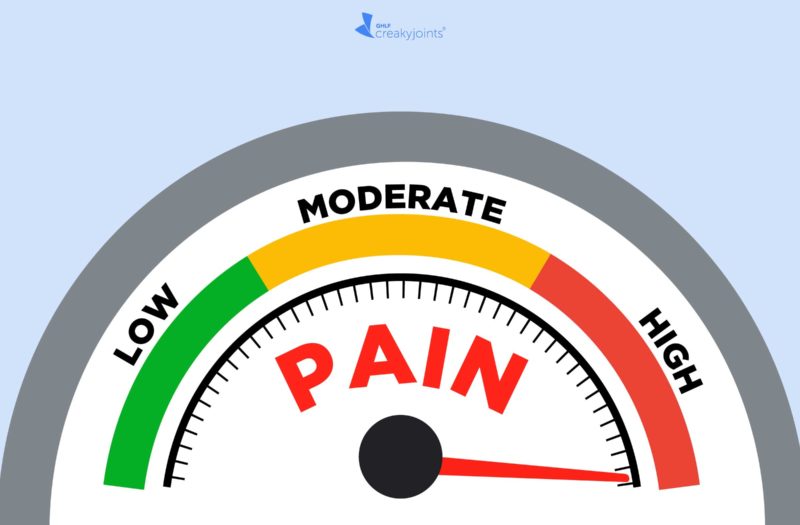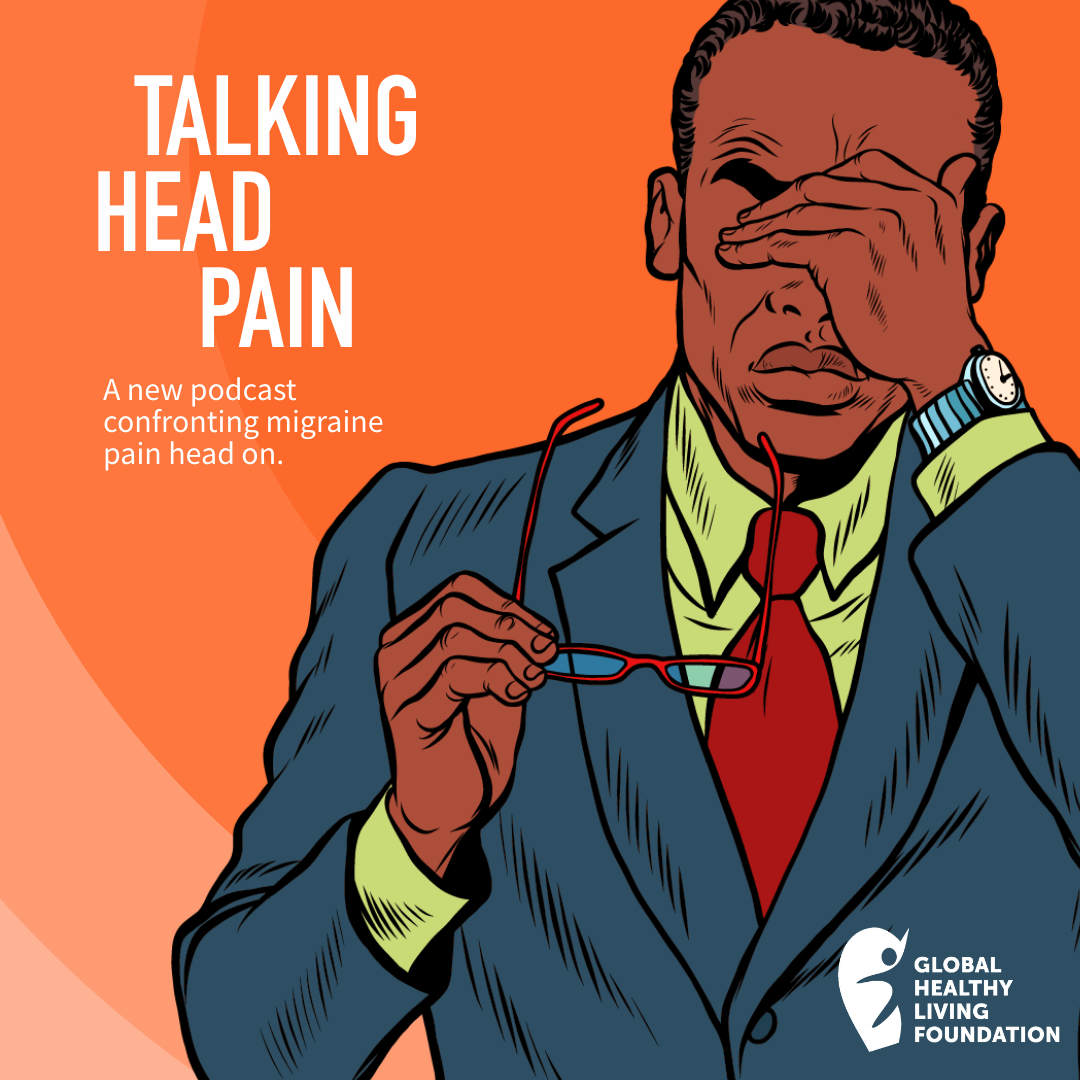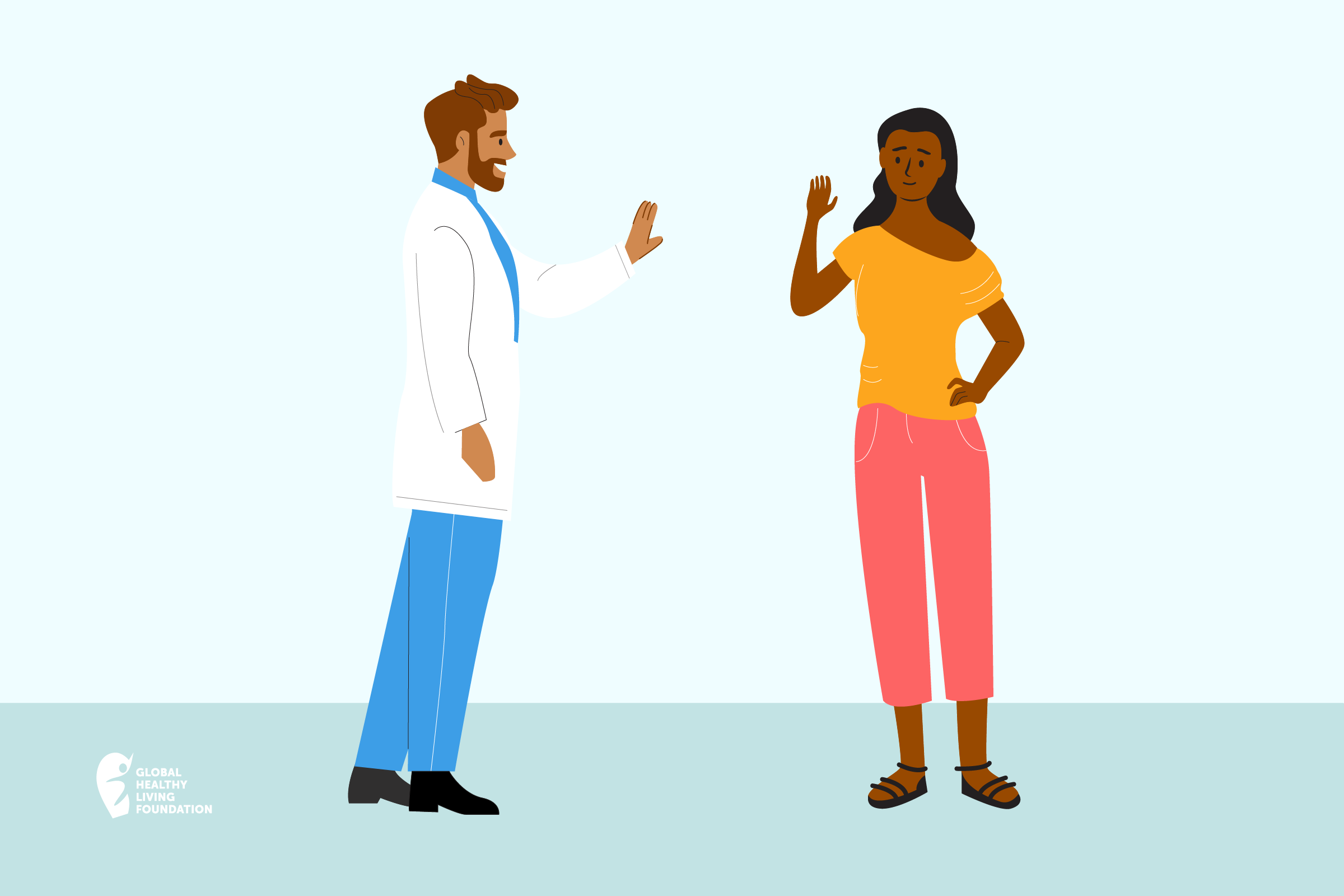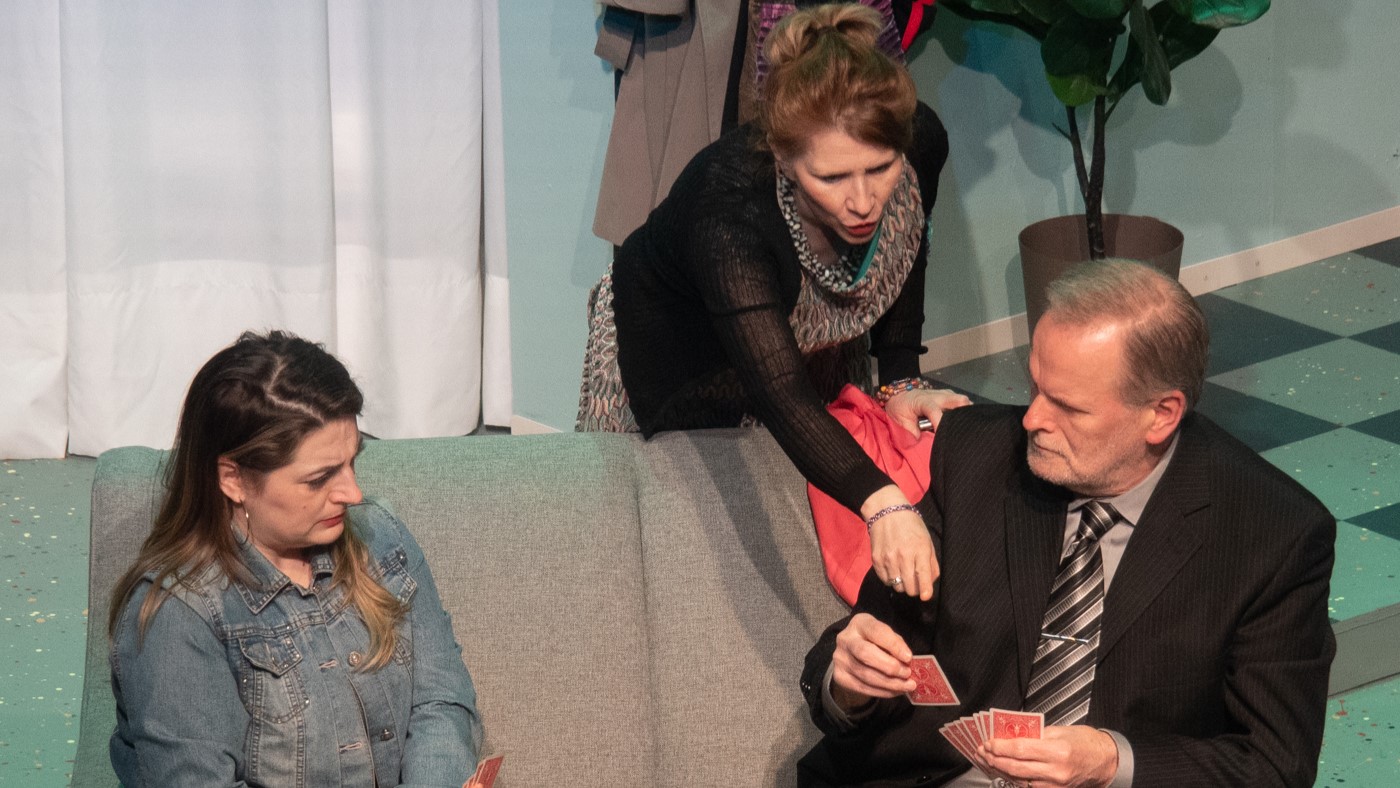

If you’re reading this, you likely already know that there is a large — but largely silent — problem of chronic pain in America. One in five adults is living with chronic pain and it is one of the top reasons people seek medical care, according to a 2018 report from the U.S. Centers for Disease Control and Prevention. The impact is immense. Chronic pain impacts nearly every facet of daily life and has been linked to disability, dependence on opioids, higher rates of anxiety and depression, and a reduced quality of life overall, according to the CDC.
Yet many people, including those suffering, are surprised by these stats. Why? Chronic pain is not something people like to talk about much — and those in pain are often encouraged to “suck it up” or “put on a happy face.”
Even worse, there is a lot of misunderstanding around chronic pain. For one thing, chronic pain is not the same as acute pain. Explaining it to someone who’s never had to deal with it can be, well, painful.
“People believe that they ‘understand chronic pain’ because they have also felt pain but it’s a completely different thing when it’s day in and day out for years,” says Monica C., 36, of Phoenix, Arizona, who has fibromyalgia and chronic fatigue syndrome. “I tell people it’s like lifting a glass — anyone can do it for a while — but try to hold a glass in the air for days at a time and you start to get an idea of what I’m dealing with.”
Sound familiar? Then you’ll relate to what these people with chronic pain are saying.
For more information on what causes pain to become chronic and how to treat chronic pain using science-based strategies, visit our Pain, Explained project. You can watch an informative webinar and sign up for a six-part series that dives deeper into chronic pain management strategies. Learn more and sign up here.
Looking fine doesn’t mean we are fine
Remember the old adage not to judge a book by its cover? Well it takes on a new twist in people with chronic illnesses. “On the outside I look normal and fine but trust me, I’m still in pain,” says Cheri G., 50, of Boulder County, Colorado, who lives with chronic migraine, fibromyalgia, and impinged nerves in her spine. “No one understands how much effort it takes to function at all, much less ‘normally,’ in spite of the pain. I look fine. But I’m not fine.”
We need the accessible parking spot but are afraid to use it
Having an invisible disability like chronic pain means that you still need accommodations like anyone else with a disability but you worry about being judged — or worse — when you use them. “My diseases make me disabled, but I get so many negative looks when I put my handicap placard up,” says Mary R., 56, of Columbus, Ohio, who has chronic kidney disease, arthritis, primary hyperparathyroidism, and diverticulitis. “I am in constant, sharp pain; I’ve never been a person who cries easily, but I’m in tears after walking several blocks anymore. Pain isn’t visible.” Learn more here about getting an accessible parking placard when you have chronic pain.
We’re not lazy, we’re exhausted
When doing even the smallest task takes monumental effort, it’s hard to get a lot done in the day. To others, this can look like laziness. “I am many things but lazy isn’t one of them,” Cheri says. “Sometimes I feel like I should try harder to do more but just dealing with the pain takes a lot out of you. It’s exhausting.”
Our side effects have side effects
Back and neck injuries sustained from a car accident have left Anica H., 29, of Burnsville, Minnesota, in daily pain, but that’s just the beginning of the problem, she says. “Because of my injuries I’m in constant pain and the pain means I can’t do as much physically, which has caused me to gain more weight than I’m used to, which in turn has caused my self-esteem to suffer, and from there my relationships have suffered,” she explains. Add in side effects from medications and treatments that then require their own treatments and sometimes it can seem like anything you do causes a cascade of new issues, she adds.
If we have to hear ‘Have you tried…?’ one more time, we’re going to lose it
Tell someone you have chronic pain and a common response is to ask if you’ve tried [insert pill, workout, cleanse, program]. “I really wish people would stop telling me that it will get better with exercise, herbs, meds, diet, or whatever the popular advice of the moment is,” says Alison M., 56, of Dansville, New York, who has rheumatoid arthritis and degenerative disc disease. “Believe me, I have done everything in my power to get healthy, but the fact is that I will always have this disease, there is no cure.”
Guilt is our constant companion
Having chronic pain can bring up a lot of painful emotions along with physical pain — and a major one for many people with a chronic condition is guilt. “I see what I think I should be, especially as a mom, and feel guilty that I’m not that person,” Cheri says. “I feel guilty when I eat. I feel guilty when I sit. I feel guilty when I nap.” Yet all those things are necessary for your health, which can turn into a vicious cycle of negative thoughts and pain.
Our pain sometimes manifests as grouchiness
People often curse when they stub their toe or yell when they touch a hot pan, so it shouldn’t come as a surprise that chronic pain can also appear as anger. Yet all too often people with chronic pain are told that they need to be patient, cheerful martyrs. “Forget that,” says Kristen M., 45, of Knoxville, Tennessee, who has chronic migraine. “I’m grouchy because I’m sick of hurting all the time.”
Our kids have to grow up faster than other kids
It can be difficult to ask for and accept help, especially if it feels like you’re leaning on people that you feel like you should be taking care of. “From the time my kids were young, I had to teach them how to take care of me on my bad days,” says April O., 40, of Mesa, Arizona, who has endometriosis, interstitial cystitis, and fibromyalgia. But while you may feel bad that your kids aren’t having a “normal” childhood, know that they love you and want to help, plus they are learning valuable skills. “Because of this, my kids learned how to cook big, delicious family dinners at a very young age,” she adds. (Here’s one mom’s take on how her rheumatoid arthritis affects her son.)
We consider our pharmacist a friend
Medications aren’t the only way to manage pain but they are often an integral part of your treatment plan — and this means you’re often on a first-name basis with your local pharmacist. This isn’t a bad thing as they understand your chronic pain condition and what you have to do to deal with it better than almost anyone else. “I’ve just had to accept that there will be medication in my life forever,” says Amy H., 34, Dallas, Texas, who has adult-onset asthma.
Pain changes everything in our lives
People without chronic pain can’t begin to imagine all the subtle and surprising ways that it impacts daily life. “There isn’t a single aspect of my life that chronic pain hasn’t changed,” Amy says. “It’s not just my physical health; everything from the importance of the weather forecast to my workouts to my household chores to my mental health is affected.”
We get treated like drug addicts
The topic of opioid medication for treating chronic pain is complicated. Dependency is a real concern, but so is undertreated pain. “I was on [opiods] every day for years and I hated it but I couldn’t function without it,” says Karl H., 66, of Madison, Wisconsin, who has osteoarthritis and ankylosing spondylitis. Then the opioid epidemic hit his midwestern town hard and suddenly pain pills were prescribed far less and anyone who asked for them was seen with suspicion, he says. “I feel like a criminal every time I bring it up with my doctor and they make me jump through so many hoops at the pharmacy. I even had the cops called on me at the ER. I only ever took them exactly as prescribed and they still cut me off,” he says.
Pain management is a lifestyle, not a pill
“Whenever I tell someone about my chronic pain they always ask if I want an ibuprofen. I wish I did. OTC pain meds don’t even touch my pain,” Karl says. Since mostly going off prescription pain pills, he says that he’s had to develop a complex daily pain management routine. “I have to watch every single thing I eat, do the right kind of exercise but not too much, make sure I can get at least 10 hours of sleep, meditate, go to physical therapy, wear my compression gear, stand up and sit down correctly… I could go on,” he explains. “And none of it is optional. If I miss anything, I risk being in so much pain I can’t function.”
We know every bathroom in a 10-mile radius
Regardless of the source of your pain, bathrooms are often the go-to escape route for people with chronic illnesses — they are usually quiet, private, and have some tools that are useful for dealing with surprise pain flare-ups or other symptoms. This means you’re super familiar with the bathrooms in and near every place you go. “I have Crohn’s disease and at times I have diarrhea more than 20 times a day. That’s a lot of bathroom time,” says Kaid G., 60, of Denver, Colorado, who also has osteoarthritis.
We live in constant fear of what’s next
Looking toward the future feels different for people with chronic pain because often they’re terrified of what their disease will do next or what side effects will pop up. “I am constantly so scared about another flare-up,” Kaid says. “The last surgeon that operated on me said if I ever need another surgery, I will need a colostomy bag and that thought is horrifying.”
‘We don’t know’ is the story of our life
There is still so much that the medical community doesn’t know about chronic pain, what causes it, and how best to treat it — and no one understands that better than the patients themselves, Kaid says. “It was 20 years before I finally got diagnosed. No one knew what I had or how to treat it. I felt like a guinea pig,” she says. “And even though I have a name for it now, they still have no idea what causes it or how best to fix it.”
The big stuff hurts, but it’s the little things that break our hearts
“All of my surgeries hurt but what really kills me is I will never be able to do things like curl my hair, lift my grandkids, vacuum a carpet, lift a gallon of milk, type on a keyboard, or even unhook my own bra,” Kaid says. “I feel like I’m not a whole person. I feel like I was robbed of having a normal life.”
We can do everything right and still have it all go wrong
Nothing is more frustrating than finally figuring out what helps you manage your pain only to have it suddenly stop working. “Most of the time I’m totally fine. It’s taken a long time but I manage it entirely with exercise, diet, and stress management,” says Suzi F., 38, of Nova Scotia, Canada, who has fibromyalgia. “But sometimes a flare up will hit me out of nowhere, for no reason, and I go from being fine to being useless in no time at all.”
Pain affects our brains
Pain hurts, yes, but it can also cause cognitive issues, including an inability to focus, mental exhaustion, andbrain fog. “Honestly it’s the mental part that is harder to deal with than the physical,” Suzi says. “I’ve become used to continuing on with my life even when in physical pain, but when my whole head feels foggy and I can’t focus — that is harder to ignore.”
We’ve been accused of faking it
Chronic pain is an invisible disability. For many people, if they can’t see it, “it doesn’t exist.” “I really do a good job of hiding my pain and so sometimes people think I’m making it up or faking my illness, especially when I say I can’t do something because I don’t feel up to it,” Suzi says. This attitude can be particularly painful when coming from loved ones who should know better.
We get so desperate to stop the pain that we’ll try anything
Marijuana was never really something Jen S., of Portland, Oregon, considered using — that is, until she wound up with chronic neck pain after a car accident. Surgery and physical therapy didn’t fix the issue and she didn’t like taking opioids so, at 42 years old, she found herself eating her very first pot brownie. “It helped so much that I got rid of my other meds and now I make my own edibles every month,” she says. Chronic pain makes you reconsider everything. If there’s a chance it will help and the risk of harm is low, it may be worth giving it a shot even if it seems really strange or out there, she adds.
We’ve lied about our pain to make someone else feel better
You’re already in pain so why spread it to your loved ones by making them upset too, right? “Sometimes it’s just easier on everyone else to pretend like I am fine, even if my pain is awful,” says Mary S., 42, of Lodi, California, who has post-chemo neuropathy. “There are only a handful of people in my life who I can be honest with and those few are chosen because they know I don’t want to be a drama queen.”
We’ve been blamed for our own pain
One way for people to deal with the scary uncertainty of your chronic pain is to convince themselves that you must have done something wrong to deserve it. “I have left so many conversations with people — whom I don’t know well — emotionally exhausted and in tears because of their assumptions that if I wanted to be better I could,” Mary says. “They assume I won’t see a doctor or that I’m refusing to do things to make my life better.”
Our pain tolerance is super-human
Some people think that being in constant pain is a weakness — that you’re not tough enough — but the reality is the opposite, says Eric L., 34, of Houston, Texas, who has psoriatic arthritis and chronic fatigue syndrome. “I can’t tell you how often I’ve been told to ‘just man up’ and ‘it’s just a rash,’” he explains. “The thing is I’ve got an incredibly high tolerance to pain, much higher than I used to. I can function every day with levels of pain that I couldn’t have even imagined before.”
A doughnut is never just a doughnut
Explaining your limitations to people and getting them to believe and respect them can be exhausting, Eric says. “Gluten makes my symptoms flare. Yes, I’m sure. No, it’s not a fad diet. If I eat that doughnut at my morning meeting, I won’t be able to walk later,” he says.
‘Scary’ side effects don’t rule out a medication
Living with chronic pain with no respite and no end in sight can sometimes feel like a death sentence, so when you’re offered medication that might help, even if it has potentially scary-sounding side effects, you still consider it, says Elizabeth P., 36, Ridgecrest, California, who has rheumatoid arthritis.
We’ve spent an entire party lying in the spare room in the dark
Your pain doesn’t care if it’s your 40th birthday party or the first Thanksgiving dinner with your whole family in a decade or your baby’s first steps — it can still totally crash the party. “One of the things that causes me the most anxiety is realizing how much life I’m missing out on because I have to lie in a dark, quiet room,” says Jennie B., 41, of Minneapolis, Minnesota, who has migraine disease.
We laugh when people ask when we’re going to get better
Chronic pain is unfortunately very often a permanent condition. “Most people forget that I’m not going to get better and my limitations are a permanent part of my life,” says Jennifer A., 48, of Gilbert, Arizona, who has rheumatoid arthritis, fibromyalgia, postural orthostatic tachycardia syndrome (POTS), and chronic fatigue syndrome. “They expect to see ‘progress’ and when it doesn’t happen it makes me feel like a failure because I can’t get better. I just manage what I’ve got and take whatever good or lousy day comes.”
Dahlhammer J, et al. Prevalence of Chronic Pain and High-Impact Chronic Pain Among Adults — United States, 2016. Morbidity and Mortality Weekly Report (MMWR). September 14, 2018. doi: http://dx.doi.org/10.15585/mmwr.mm6736a2.
Join CreakyJoints Canada
For people who live with chronic illness, having a community that cares and advocates for your needs can be helpful. Join CreakyJoints Canada.





